You can take every car, park and industry away, but, as long as there is one fragile element in town, it will always be called an urban place. Of course, that element are the people that keep every urban environment alive and most of time are the real "destination" when we travel for city breaks. But what happens if you develop an urban area in a way it repels and discriminates the human scale?
On 4 January the very first experiment of urban mobility was held in Riga, when a half-length of the central Tērbatas street was closed for motorized traffic and given to pedestrians, cyclists and rare trolleybuses. We celebrate this experiment and launch a series of documentary photo stories called "CAPITAL CHRONICLE" - how does Riga look like from the human scale and what stories it tells?
BACKGROUND
There would be a completely different CAPITAL CHRONICLE if no Rīgas Centre Development Community would be launched in 2019 in order to support concepts, ideas, and solutions and execute it all in a way to help rejuvenating, calming and making the city centre liveable (interesting that the Community was born just recently, thus emphasizing the issue with the majority of residents and politicians blindly considering "why would anything be wrong" with the seemingly wealthy and popular, yet worn-out heart of the city).
Entering the premises of the current mayor of Riga, Oļegs Burovs, in September, Jānis Aufmanis, Toms Krilovs and Anete Kauce from the Community knew, he likes clear and constructive suggestions. Although the seminal purpose of the meeting was introducing the mayor with the Community's mission and objectives, presenting an experiment of closing down Tērbatas iela right before Christmas to turn it into a pedestrian street with shopping stalls and hot wine also seemed like a wild card to play. "We did not know the concept is at least 13 years old," adds Toms. "Thanks to Viesturs Celmiņš, a prominent social anthropologist, we were brought together with several departments at the council, architects and urban developers to make this happen".
"The community gets a greener, safer, more accessible urban environment. The city becomes peaceful and more walkable, the flow of people is less hectic. It seems perfectly suitable for hopping in a shop or café, thus increasing general satisfaction as well as turnover and income," explains Toms.
Indeed, isn't that what we all want in the heart of the city? That's why Riga needs to change its modernist approach of keeping car-driven roads to immediately switching a selection of streets every weekend to human scale only. Lack of peaceful, smokeless, safe and micromobile downtown are the reasons why many move out from the city centre and then return with cars as short-term tresspassers, making the central residents and guests suffering again. Respectful and mindful urban infrastructure has always been an important part for healthy street life, better human interaction and local businesses.
"I also think that people get to look at the city from a different perspective. Than can make things for the better," adds Anete. For that was the reason CAPITAL R began BLOW-UP Instawalks by inviting people to join urban saunter and "blow-up closer the invisible city and its stories" as well as share each impression on social media thus "blowing-up" Instagram.
So here is the first BLOW-UP walk that also begins our CAPITAL CHRONICLE documentary photo series with Kaļķu (Street Food Fest) and Blaumaņa (Micromobility day) ielas coming up next during the following month. Let's have a walk along the street then and see what's on its mind:
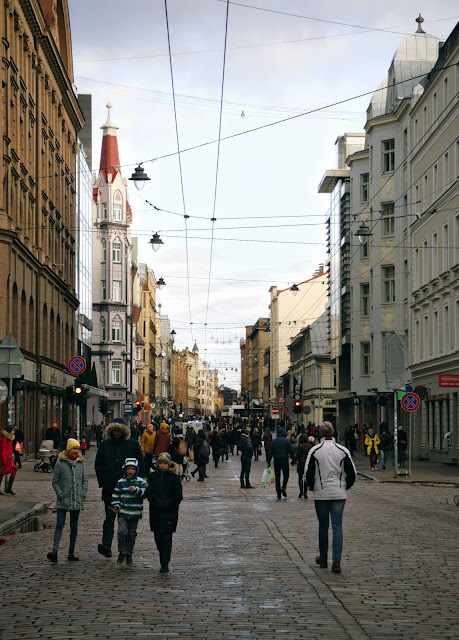 |
| As a road, Tērbatas iela has existed for several centuries, but it only gained its name (Tartu street) in 1885 after the city ramparts were dug off and a new city centre was formed starting from the early 1860s. Before that, since 1810, the street was named Kaļķu iela, meaning that it served as an extension to the central street in Old Town. The general, eclectic view one can see today by measuring the street, was mainly built from 1890s - 1930s. |
|
|
|
 |
| Tērbatas iela begins with a square named after the first professional, Latvian-born architect in the history, Jānis Frīdrihs Baumanis (1834 - 1891). Also the richest Latvian of its time, so rich he owned a private train to the Jurmala resort town. Baumanis became wealthy by buying cheap land after the ramparts were liquidated, building an amazing heritage of ground-braking historicism architecture and then selling it before bankrupting after the real estate crisis in 1875 and dying in poverty. This one above, Riga Regional court (1888), was one of his last works with an apartment and workshop made for the master and his family on the top floor. |
 |
| Tērbatas iela houses multiple examples of functionalism with this, designed in 1931 by the local functionalist mastermind Aleksandrs Klinklāvs (1899 - 1982), setting the pace. Once occupied by a wooden tavern for drunks, lowlifes and the poor and owned by the local entreprener Augusts Rudzītis, the address suddenly switched sides after the new house was opened as a high-class restaurant and apartment space. The ground floor never stopped serving foods and beverages, and its present occupier is the famous LIDO Latvian traditional foods chain, feeding most of tourists around the area since 1999. |
 |
| Probably the most prolific (250 houses!) and influential local Art Nouveau architect, Konstantīns Pēkšēns (1859 - 1928), can call Tērbatas iela his walk of fame as every corner of the central part of the street hosts his masterpieces. The Mutual Credit Union Bank of Riga Merchants (1909) is just another example of his flight of imagination and also the bottomless of funding given to this man - imported Finnish and Swedish granite, countless stained glass pieces, massive timber interior panelling and even gilded ornamental reliefs is what this house is shaped of. |
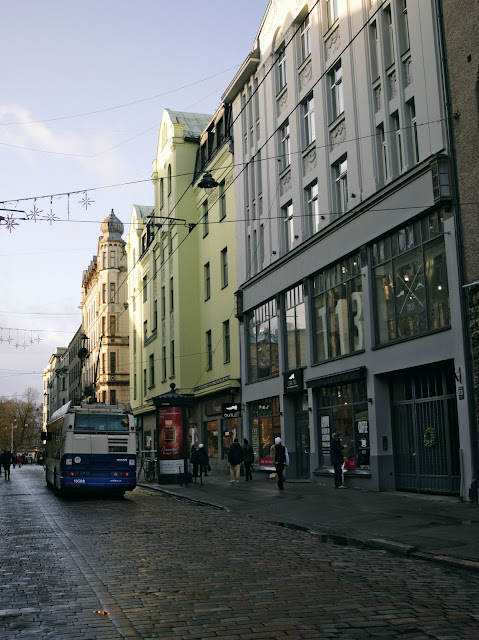 |
| Trolleybus No.1 might be the most unique in Riga. It's the only public transport service on Tērbatas street, the shortest route in the city as well as the first trolleybus line in Riga. After the first electrified bus was launched in 1947, it soon started running along Tērbatas street, giving the city its significant, but sometimes anoying Post-Soviet overhead wiring. The grey house (1912) to the right is also unique - it's one of the first ferro-concrete buildings in the city as well a significant change in the window shaping game of Riga. |
 |
| "Once a school, always a school!" can be fairly said about this educational building (1905) created in collaboration between the already known Konstantīns Pēkšēns and one of the most prominent and then emerging theoreticians and practitioners of National Romanticist architecture, Eižens Laube (1880 - 1967). National Romanticism praised buildings being a mirror of the local values, traditions, folklore, mythology, and materials, and celebrated indulging into Latvian rather than Christian, Greek, Roman etc. history. This, one of the seminal examples of such style during the Art Nouveau period, is a great example of the named preconditions also practised a lot in Helsinki at the time. Read full text on Mr. Laube here. |
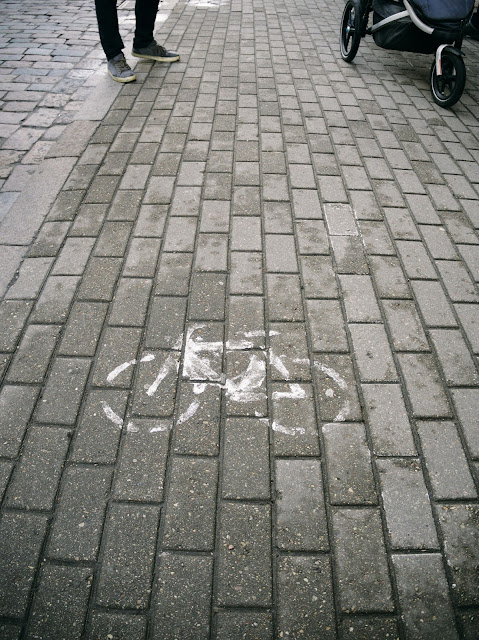 |
| In 2010, the first official cycling path was opened in the city centre. After that... not much really happened. It then lead to Riga becoming the European Capital of Culture in 2014 that caused multiple groups and individuals developing either professional, yet unimplemented urbanisation plans or such guerilla biking lanes like the ones above, and marking the itch for cycling infrastructure in the city. Nothing much has still changed since then, but, at least, the "fake" lanes along Tērbatas iela and elsewhere in the centre remind of the need and ability and has helped to build a much strnger cycling community. Read full text on cycling in Riga here. |
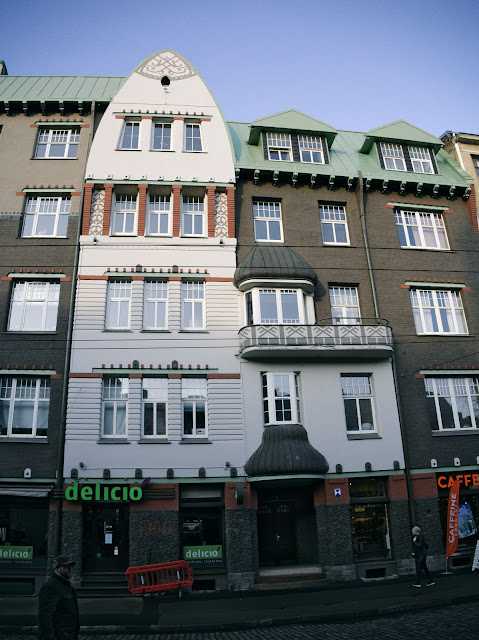 |
| Another, rather flamboyant piece of National Romanticism (1906) by Konstantīns Pēkšēns & Eižens Laube is located between two other "Art Nouveau sisters". The three buildings tell a great and chronologically even (1900; 1906; 1912) story of the development of Art Nouveau. Beginning with a house by Mr. Pēkšēns to the left, the period (also known as Jugenstil, Style Modern, Secession, etc.) began with over-decorated façades, then the one above turned to local and more experimental forms that lead to the third (to the right), turning to the ascetic, decoration-free architecture form significantly known as - Riga Perpendicular Art Nouveau. Where the "delicio" eatery is now, there was the exotic, yet short-lived "American Fried Chicken" opened in the early 1990's by a local entrepreneur. |
 |
| Before the great fire in 1812, caused by military action after receiving misconducted information on Napoleon attacking Riga, the whole Central neighbourhood around Tērbatas iela was full with households surrounding Classicism villas like this. One can ignore the recently "updated" window placement to enjoy this seldom seen type of architecture. Later most of the survivors during the XIX century dissapeared from Riga when being torn down by land owners themselves in order to build... another Art Nouveau on top. |
 |
| Parked next to a Soviet Post-modernist extension (1979) of Natālijas Draudziņas gymnasium, the "fiqsy" e-scooters are the only ones still operating in the cold after the electric kick scooter hiring business was launched in Riga in spring, 2019. Since then there have been 5 apps, a little road rage and a little of regulation changes, nonetheless the use of e-scooters in Riga has caused less fuss than in other cities in Europe. Read full text here. |
 |
| After WWI and 800+ buildings erected during the 15-year-long Art Nouveau period, Riga suffered a great economical and creative downslide until mid 1920s when building recrudesced. This multi-purpose house (1929) was only one of few citing the already fading Art Deco style Riga never really experienced; at least the element of tower-lantern (a popular motif in the European architecture back in the day) indisputably reminds of the great time of seemingly boundless verticality being born in architecture. |
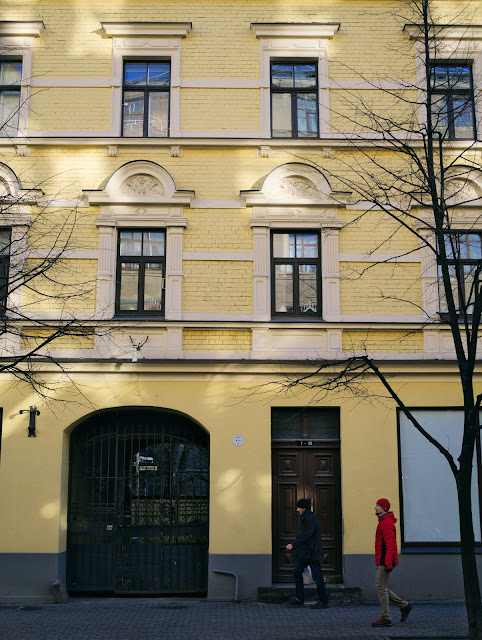 |
| This backyard gate was once a popular smoking spot between a still existing hairstyler and once legendary pub "Gauja" (named after the longest river in Latvia; located in the window to the right). Before being relocated around the corner on Stabu street, Gauja gained the status of being one of the most known bars in Riga, furnished in a Soviet-Nordic style in the sixties/seventies and often visited by famous alternative, underground and subcultural stars from the 1980s and up. For some, Gauja also served as a vital portal into the city's bohemian life of music, art and literature. |
 |
| Although a handful of individuals were very vocal about their dislike toward the concept of closed streets, for a half day when Tērbatas iela was limited to pedestrian, cycling and public transport traffic only, it was visited by roughly 2500 people during the peak hour only, at least 3 non-governmental or left-wing political organisations would set up their information points, 70% of indoor places got more visitors and 50 % got more first-time visitors. More at "Pilsēta cilvekiem" FB. |




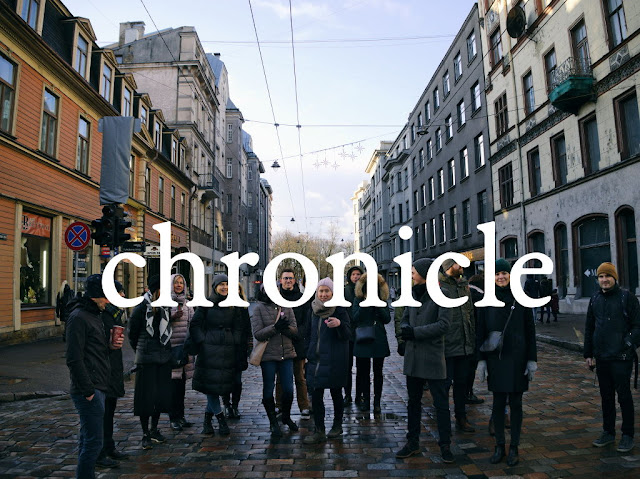
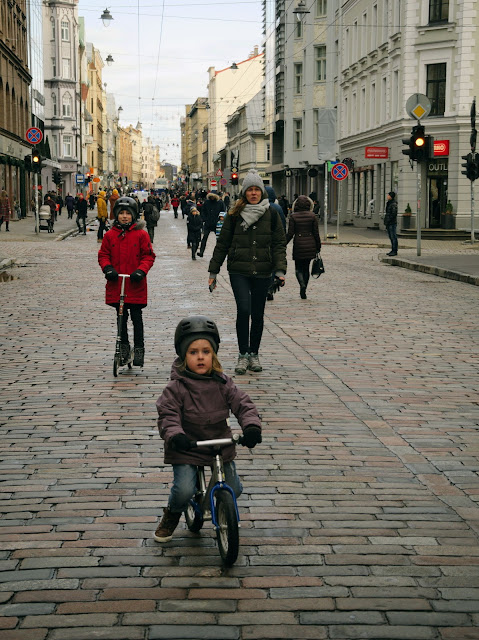









This is one of the best streets to ride a kick scooter. The road is smooth and the weather is perfect to ride here. I really like this street.
ReplyDelete